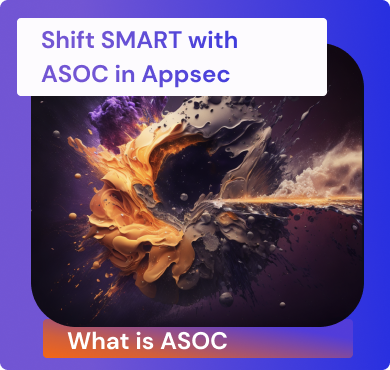In today’s digital age, the protection of applications is essential to safeguard sensitive data and prevent cyberattacks. One effective way to enhance the security of applications is by implementing application security orchestration and correlation (ASOC). This approach integrates various security tools and processes to provide a more comprehensive and efficient security framework.
Here are some of the benefits of ASOC:
- Improved Visibility: ASOC provides a unified view of security events across different security tools, enabling better visibility into potential security threats. This allows security teams to quickly identify and prioritize security incidents and take appropriate action to mitigate them.
- Enhanced Efficiency: By automating security processes, ASOC helps security teams to work more efficiently. It reduces manual tasks and improves response times, enabling teams to focus on more critical tasks and achieve better results.
- Better Compliance: Compliance with industry and regulatory standards is critical for organizations to avoid fines and penalties. ASOC helps organizations to comply with regulations by providing better visibility into security events, enhancing risk assessment, and enabling faster response to security incidents.
- Improved Collaboration: ASOC encourages collaboration among teams involved in security operations, including IT, operations, and development teams. This helps to break down silos and improve communication, resulting in better overall security outcomes.
- Cost-Effective: Implementing an ASOC solution can be cost-effective in the long term. By automating security processes and improving efficiency, organizations can reduce the number of security incidents, resulting in cost savings.

Conclusion and benefits of ASOC
In conclusion, implementing application security orchestration and correlation (ASOC) is crucial in today’s digital age, where the protection of applications is critical. With ASOC, organizations can improve their security posture management and monitoring by integrating different security tools and processes into a single platform, allowing for better visibility and control of security events. ASOC also promotes collaboration among different teams, breaking down silos and enabling efficient communication to achieve better results. Furthermore, ASOC allows for a risk-based approach to security, creating risk-based scores based on context, enabling organizations to prioritize security incidents based on their severity. Ultimately, ASOC maximizes efficiency, allowing security teams to focus on critical tasks and achieve better outcomes. Therefore, organizations must adopt ASOC to have a single point of view on all application security tools, enable risk-based scoring, and maximize the efficiency of their teams in securing their applications.
How can Phoenix Security ASOC can help to assess your posture
Phoenix Security offers a comprehensive Application Security Orchestration and Correlation (ASOC) solution that helps organizations improve their security posture by integrating different security tools and automating triage and other time-consuming actions. Our ASOC solution analyzes data from multiple security scanners, including DAST, SAST, SCA, MAST, and others, deduplicating, prioritizing, and tracking security posture and issues from code to cloud in a contextualized and prioritized manner.
With Phoenix Security’s ASOC solution, security teams can focus on more strategic actions as our solution takes care of tedious and time-consuming tasks, such as data aggregation, issue prioritization, and tracking. By automating these tasks, our solution reduces the workload of security teams, allowing them to focus on more critical tasks such as incident response, threat hunting, and vulnerability management.

















